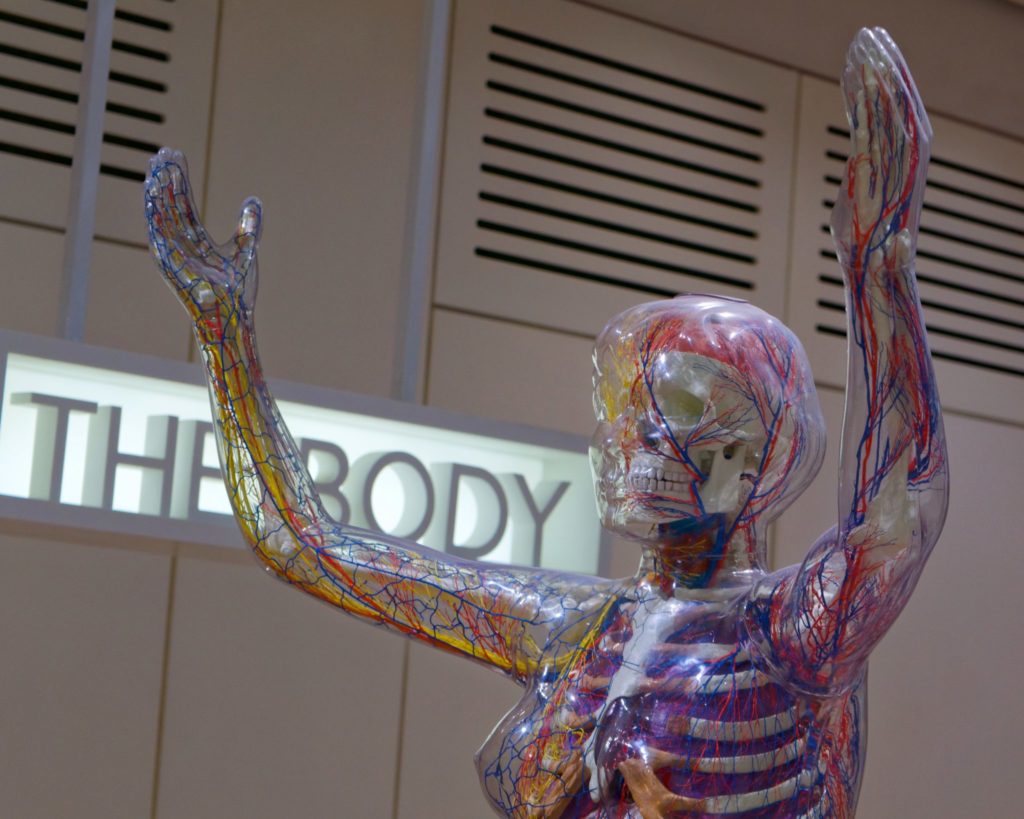For many people, nerves are often under estimated when they talk about pain. Typically, muscles, joints, bones and other soft tissues get blamed for being sources of pain (ie, “tight hamstrings and tight hip flexors”, “bulging disc in the spine”, or “bad knees”). Not that muscles and other tissues aren’t part of the equation, but let’s talk about nerves.
Some nerves supply the abilities for muscles to move (motor) and other nerves only supply the abilities to feel (sensory). Some nerves do both. But ALL nerves are the messengers that transmit pain signals. Nerves that travel away from the brain and spinal cord are called peripheral nerves. These nerves travel all the way to the tips of the fingers and toes (oh, and also into the pelvis!). Peripheral nerves can be irritated for a number of different reasons. They can be compressed by bones/organs, scar tissue, altered postures, various activities (i.e., sitting on a bike seat for prolonged periods of time), or placement of a foreign object (think: mesh with hernia surgeries). When nerves are compressed, their own blood flow is reduced and in time this can cause pain and/or muscle weakness. A well-functioning muscle is at the mercy of a well-innervated and happy nerve.
Let’s peek at an example. One well known peripheral nerve is the sciatic nerve. The sciatic nerve is the largest and longest nerve in the body. It runs from the lower spine/sacrum, through the deep buttocks, into the back of the thigh, and finally into the foot all the way to the tips of the toes. By the time it ventures into the thigh and leg, it branches out into smaller nerves. Not only does it supply motor functioning to the lower extremities, but it also supplies sensation to the leg and foot. It can be compressed by: 1. vertebrae (and, yes, perhaps even a disc), 2. scar tissue from a surgery, 3. muscle spasms, 4. swelling, or 5. prolonged sedentary postures (especially sitting). In states of compression or injury, people start to get pain that radiates into their buttock, back of thigh, and maybe even into their foot. In more serious situations, they may also lose motor abilities in the leg and foot (muscle weakness = automatic visit to the doctor). When pain and/or muscle weakness presents itself, it takes a thorough examination by a physician and/or physical therapist to determine specifically where the issue is arising from. Is it occurring where the nerve exits the spine, or maybe deep in the buttocks muscles, or is the issue occurring somewhere in the lower extremity? The moral of the story is that the nervous system acts like a warning system and is an important starting point for medical providers to get down the root of the problem. After all, our goal is to treat the source of pain and weakness (free the nerve!) as opposed to just the symptoms (such as tight, painful muscles).
When nerves aren’t happy, they’ll let you know. Sometimes that symptom you feel may be as simple as a muscle that doesn’t feel quite right. Other times nerves signal loud and clear: pain, pain, and more pain! If you are experiencing something that feels off or you’re having to stop doing certain activities because of pain/weakness, then talk with a medical provider (physical therapists or physicians specialized in physiatry/physical medicine and rehab are great places to start). The good news is the nervous system adapts quite well and can be influenced by the right treatments. Pain as a result of nerve signaling is a normal human experience. It’s also a powerful motivator, telling us to stop, pay attention, move, or take care of the problem.






